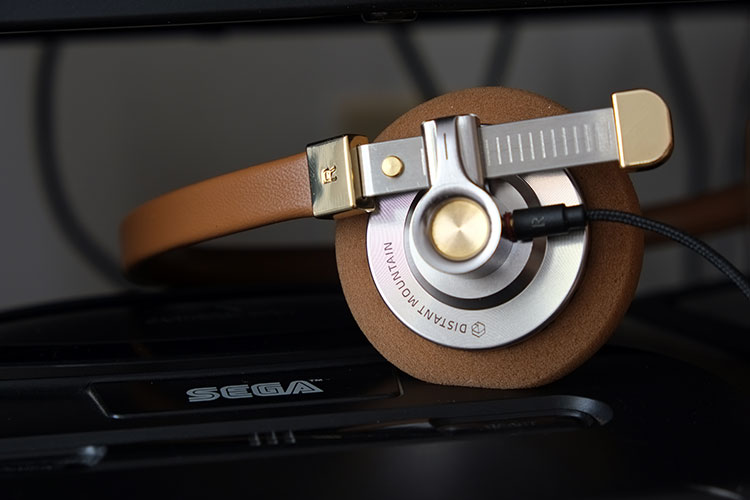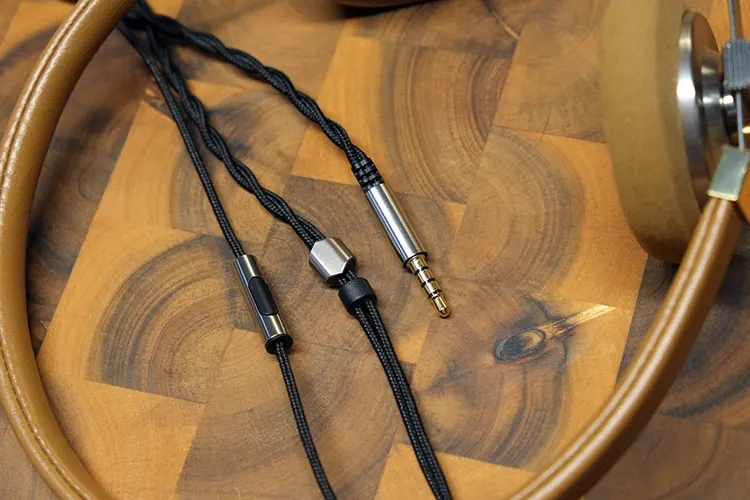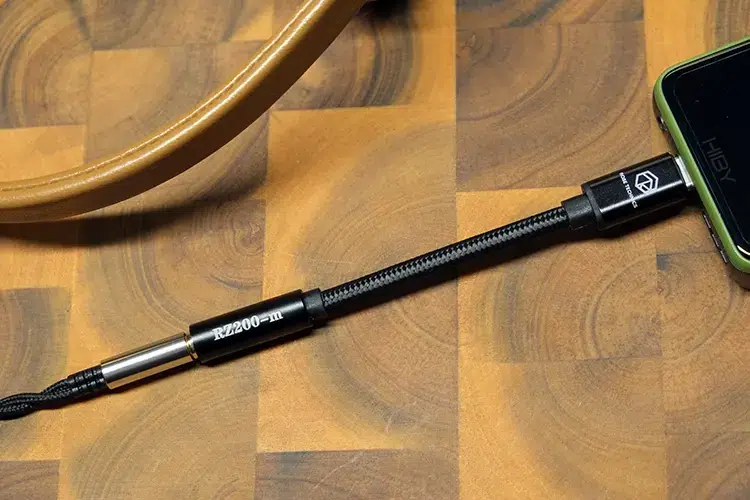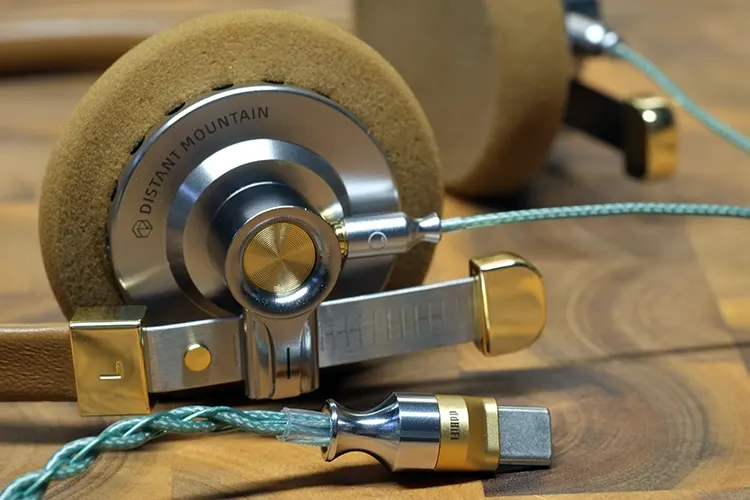Thomas reviews the ROSESELSA Distant Mountain, an affordable set of retro-styled 40mm dynamic driver on-ear headphones priced at $64.99.
Disclaimer: This sample was sent to me in return for my honest opinion. Headfonics is an independent website with no affiliate links or services. I thank HiFiGO and ROSESELSA for their support.
You can click here to learn more about the HiFiGO gear previously reviewed on Headfonics.
This post follows our scoring guidelines, which you can read in more detail here.
I’ve been a fan of ROSESELSA since I reviewed the Masya and Mojito in 2017. Those earbuds were exceptionally unique in their design, with a dual driver setup and 3D-printed shells.
The Mojito had some of the best sound quality I’d heard in an earbud, a statement that still rings true today.
Over the last year or so, I’ve been on a vintage headphone kick, having picked up a few interesting pairs of classics from the late 1970s and early 1980s. From Yamaha, I found the YHD-2 and HP-2, both orthodynamic on-ears, and from Pioneer, the venerable, dynamic-equipped SE-4 on-ear.
When I saw that ROSESELSA had released a new pair of on-ear headphones with a distinctly vintage design, I knew it was meant to be and requested a sample for review.
Affordable, modern headphones with a vintage look, made from unexpectedly premium materials, AND from a brand I already like? Um, yes, please.
Features
You’d think a low-cost headphone would be constructed mostly from plastic with a few strategically placed metal accents.
That’s not the case with the Distant Mountain, which is made entirely from stainless steel, save for a lambskin headband and a hint of plastic surrounding the MMCX ports, a necessary evil since it affords protection from bumps and knocks.
ROSESELSA squeezed reasonably large 40mm dynamic drivers within the compact earcups. Strong neodymium magnets are also present to help ensure controlled diaphragm movements.
The Distant Mountain features an array of pressure relief ports, visible from the outside via the holes placed around the sides of the earcups. This design reduces pressure buildup to improve listening comfort, extend the treble region, and provide a fuller overall sound.
This headphone comes with removable cables, though ROSESELSA has gone with MMCX instead of the beefier 3.5mm or similar style plugs we usually see.
Given the size of the earcups, MMCX seems like a solid compromise and opens a world of third-party cable options, including the application of 2-pin adapters to expand things even further.
Design
ROSESELSA knocked the Distant Mountain’s design out of the park, creating something distinct but with a strong retro flair. Also, what screams retro more than brown?
The headband is a slim slice of stainless steel covered in a delicate lambskin wrap with gold blocks containing the L/R markings covering the ends of the lambskin. Despite the slenderness, there is still a noticeable amount of padding on the underside of the band.
The stainless steel headband extends through the gold blocks and is marked with etched detents on which the ear cups slide up and down. Gold buttons acting as stoppers are present above the detents, while semi-circle gold blocks cover the end of the stainless steel strip, keeping the cups from sliding off entirely.
The earcups are CNC machine stainless steel with a knurled gold recession set within the headband hanger. The knurling continues around the base of the cup, where you find Distant Mountain subtly printed.
10 holes are punched into a semi-circle around the side of each earcup. These are the functional aspects of the Array Pressure Relief design and face towards the back of the head, meaning they don’t pick up wind noise when out and about.
Removing the foam pads, you find the drivers covered in a protective steel plate with holes punched in that allow sound to pass through. Fine fabric mesh provides additional protection for the drivers.
In general, the build quality is outstanding. The cups slide with clear, firm detents, everything fits together snugly, the stitching on the lambskin is well done, and it all feels solidly put together without any creaking or obvious weak points.
The Distant Mountain is a good-looking, well-built headphone that needs nothing more than earcup articulation to address its one obvious design flaw.
Comfort
I feel that the comfort of the Distant Mountain will be hit-and-miss, a point of contention among the community. There are two reasons for this: earcup articulation and clamping force.
The earcups do not articulate; no swiveling, no pivoting, and no other movement beyond sliding them up and down to adjust the headband length. I have a small noggin, and when I’m not wearing a hat, I have the band set one click above the lowest setting.
This results in uneven pressure on the ear, with most being placed lower down on the earlobe. Over long listening sessions, this becomes a hotspot and causes discomfort, necessitating a quick break.
If you have a larger head, the earcups should sit more evenly over your ears, which, in theory, should lessen the type of discomfort I experience. Although you’ll still have to deal with the second issue: clamping force.
The Distant Mountain provides a firm grip on your head. Once it’s in place, it clings to your noggin like a baby opossum hanging onto Mom’s body for dear life.
Given the on-ear design, a stronger clamping force than an over-ear design is expected and makes sense. You don’t want it falling off at the slightest unexpected movement or when walking normally.
ROSESELSA’s selection of stainless steel for the headband was smart since, if careful, you can encourage the headband into a less aggressive curve to reduce the clamping strength. I’m not suggesting you do this since it can go very wrong, very quickly, but if you choose to risk it, take your time.
Isolation
Given that the Distant Mountain is an on-ear headphone with plenty of ventilation, it should be no surprise that isolation is not its strong suit.
The amount of passive isolation provided is on par with your average pair of full-sized, open-back, on-ears, in that there is almost none.
Outside noise becomes slightly muffled, with maybe a few dB drop in overall volume, but it’s far from significant enough to be effective anywhere. What I’m trying to say is, don’t buy these for their passive isolation.
Stock Cable
Cloth-covered cables are not my favorite since they typically have issues with noise and durability, so seeing one included with the Distant Mountain was disappointing. That said, as cloth-coated cables go, this one is pretty good.
Two twisted strands split and head to each earcup after the Y-split. The cloth sheath is flexible, unexpectedly resistant to the sounds of bumps and rubbing, but still subject to tangling and kinking, as I experienced almost immediately upon taking it out of the box.
The hardware used is not great but not terrible. The y-split and compact straight jack are aluminum-wrapped plastic with usable strain relief at the plug.
The MMCX ports are compact plastic nubbins with clear L and R markings. The fit is extremely tight, so you won’t have to worry about the cable detaching unexpectedly.
Present above the y-split is a plastic chin cinch. Movement is limited by the single-button, in-line microphone module, which keeps it from being truly effective.
The button clicks with a solid detent, and the sound quality from the microphone is usable but not great. Voices are clear with enough body and warmth, but every move of the cable is transmitted, leading to unwanted clicks and scrapes being heard by the person on the other end, which can be distracting.
Lastly, the cloth sheath is black and not color-matched to the headphones. While this isn’t a big deal, it feels like a missed opportunity.
In the end, the cable is perfectly adequate. It was something I sought to replace immediately, though, moving to something that used higher quality hardware and a better fit aesthetically.
Packaging & Accessories
ROSESELSA went all out with the packaging on a sub-$100 product, creating an experience that feels considerably more premium than it should.
The large white cardboard box features high-quality printing on every side with a high-resolution, glossy image of the Distant Mountain on the front and sides. Flipping to the back are two smaller images of the Distant Mountain in both colorways, along with a list of features and box contents.
Lifting the magnetically sealed flap reveals three sections. To the far left is a slide-out drawer containing accessories like the cable, waifu statue, and user manual.
Down the spine is another box containing a second set of donut-style earpads. Also tucked inside is a USB-dongle DAC, ROSESELSA’s RZ200-m.
Lastly, to the far right, under a slice of rice paper containing a stylized image of the headphones with the name and image of a mountain, are the Distant Mountain headphones.
ROSESELSA’s presentation of the Distant Mountain is above and beyond what I’d expect to see from a product in this price range.
My only complaint is that the accessory drawer is tough to remove without damaging the packaging, an issue that could be easily solved with a small pull tab, which I added via a small piece of tape.
Sound Impressions
The following sound impressions of the Distant Mountain were completed using a mix of ROSESELSA’s included dongal DAC, the RZ200-m, ddHiFi’s ddHiFi TC35M2, and the powerful EarMen TR-Amp.
Summary
A V-shaped signature is on offer with the Distant Mountain, which fits with its intended use as a portable headphone. Bass is usually the first thing lost when listening in a noisy environment, and the bass afforded by the Distant Mountain is enough to remain satisfying once you leave the comfort of your home listening station.
Treble extension is adequate, tapering off in the brilliance region. Some sparkle and shimmer are present, but the focus is more on the presence region.
The midrange is slightly recessed but not to the extent that it hides behind the other regions or is affected by mid-bass bleed. Instruments and vocals retain their presence in the mix but do not overstep and take over.
The staging is good but not so large as to be truly immersive. The Distant Mountain’s technical capabilities are also fine but nothing unexpected for such an affordable product.
Overall, it’s a smart tune that works well in a variety of different environments. I am quite fond of how the Distant Mountain sounds, even if it doesn’t even remotely approach “best of” territory, except when it comes to sibilance management, and the driver could use more refinement.
Bass
The Distant Mountain has a strong low end with a solid balance of mid- and sub-bass that leans more towards the mid-bass region. Notes are punchy and hit hard with good visceral feedback when a track digs deep.
Speed is adequate with the 40mm driver’s decay holding up well until you get into rapid double bass notes or mix prominent bass with more complicated passages.
In these instances, the Distant Mountain starts to lose composure, and notes begin to bleed into one another.
Texturing out of the Distant Mountain is fine. Grungy notes come across as adequately rough and tumble, though more refinement is desired for smooth passages.
Mids
Sitting just behind the other frequencies, the mid-range of the Distant Mountain is handled well. Balance leans towards the lower mids, though not to the extent that the presentation suffers and sounds muddy.
Thanks to the prominent mid-bass region, warmth carries into the mid-range, giving the Distant Mountain a warm, full sound. While it’s not going to win any awards for detail and clarity, these qualities are good, and I never found the Distant Mountain lacking.
Sibilance management is darn impressive from the Distant Mountain and up there with the best I’ve heard. Even on tracks like Aesop Rock’s “The Gates,” which suffers from intense vocal mastering, the Distant Mountain somehow retains a non-fatiguing nature.
Treble
The upper ranges of the Distant Mountain are competent but unspectacular. As you approach the brilliance region, things start to roll off, resulting in a moderate amount of shimmer and sparkle.
The alternative donut pads included with the Distant Mountain add some additional emphasis to the brilliance region, but the effect is mostly insignificant.
Bais is towards the presence region, which is probably a good thing because while detail and clarity are good, they’re not great, and some micro-details fail to stand out as they should.
The Distant Mountain’s reasonably dense presentation is present here as well, meaning the amount of air and space between notes is fairly average.
Also leading to this impression is a note presentation that could be a bit tighter and better defined. I wouldn’t call the Distant Mountain loose and splashy, but it’s not as crisp and refined as it could be.
My overall impression of the treble is that it is competently tuned. It isn’t aggressive, tiring, or technically impressive, but it also isn’t dull and free of character.
Staging & Dynamics
Staging from the Distant Mountain is spacious but falls short of being immersive. The default vocal positioning is reasonably close, starting right at the edge of the outer ear, with the deep bass floor providing most of the sensation of space.
The stage on offer is wider and deeper than it is tall but gives off a generally well-rounded sensation. The way sounds move from channel to channel is smooth and accurate, particularly off-center, where it does a great job with small shifts.
The Distant Mountain offers solid layering and instrument separation characteristics but is held back somewhat by a reasonably dense and meaty note presentation. Still, I only felt it was at a disadvantage when playing rapid, highly congested tracks through it.
Click on page 2 below for my recommended pairings and selected comparison.









